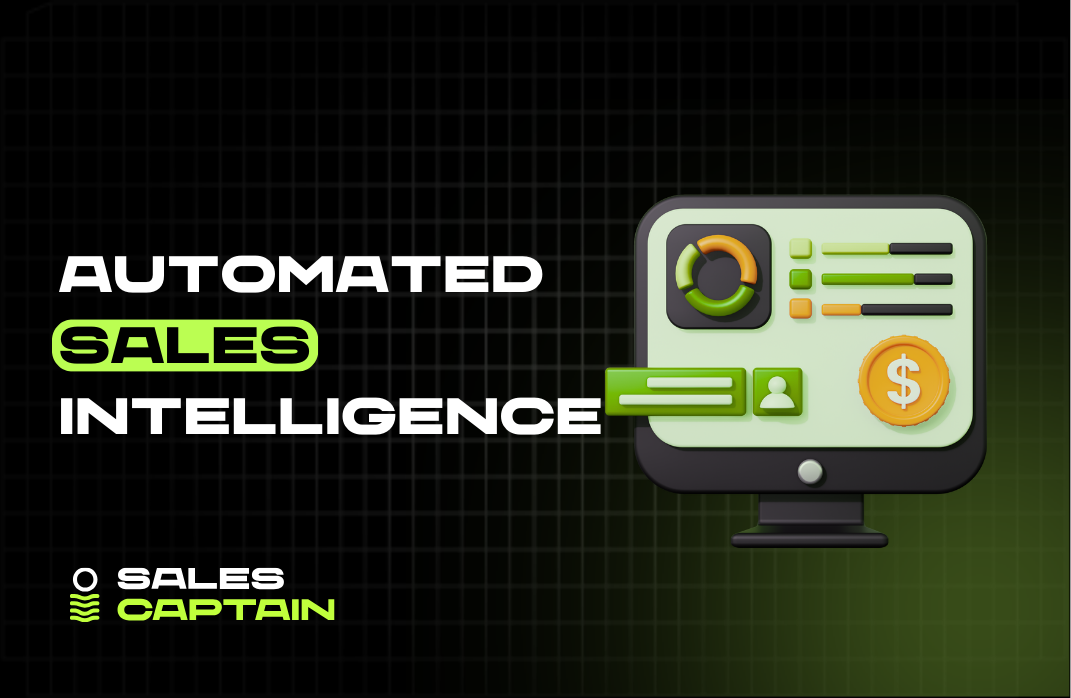

Clay AI Agent: How It Works, Benefits, and Use Cases in 2025

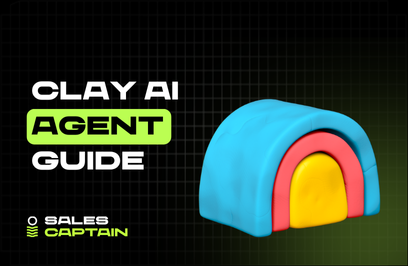
Introduction to Clay AI Agents
What is Clay?
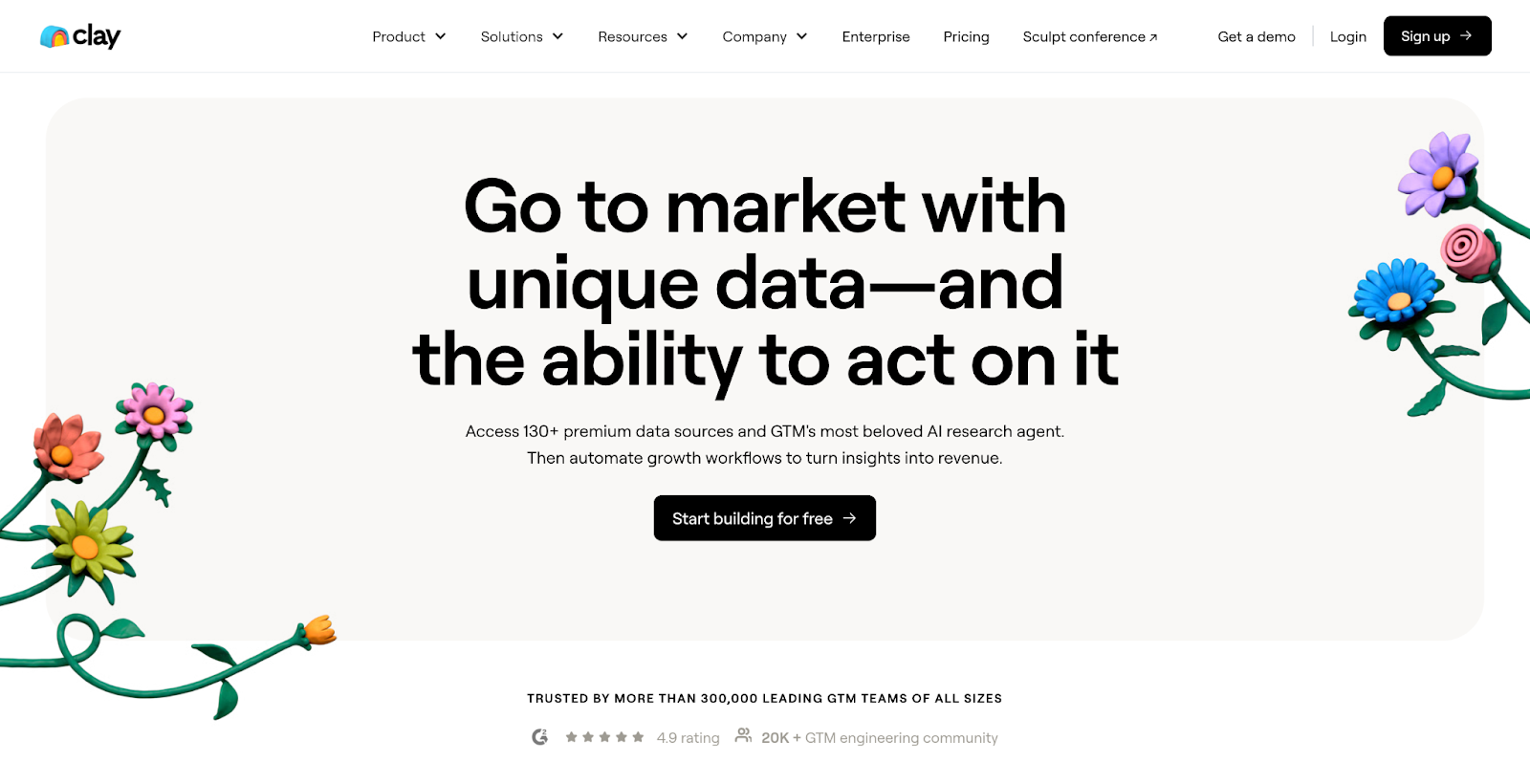
Clay started as a data enrichment tool, but now it's more like a programmable workflow engine fed by the internet. It pulls from APIs, scrapes, parses, and merges data faster than any human could, and it does it live. At its core, Clay connects tools, enriches data, and automates motion.
But here's where it gets interesting: it's not just a tool. It's an AI system you can instruct like a team member. Give it a goal, and it handles discovery, logic, and execution.
3,000 free credits using that link? That’s enough to run serious outbound tests.
Overview of Clay AI Agents and Their Purpose
Clay AI Agents take automation a step further. Unlike traditional trigger-based workflows, agents are dynamic; they reason, adapt, and make decisions in real-time. Think of them as self-updating workflows that get smarter over time.
Their job isn’t just to move data around. Clay agents actively analyze signals, trigger GTM (go-to-market) actions, and handle outreach or research autonomously. SDR tasks like lead research, LinkedIn personalization, and email drafting? The agent owns those now.
It’s not just about scaling tasks. It’s about upgrading your outbound brain.
Understanding the Technology Behind Clay AI Agents
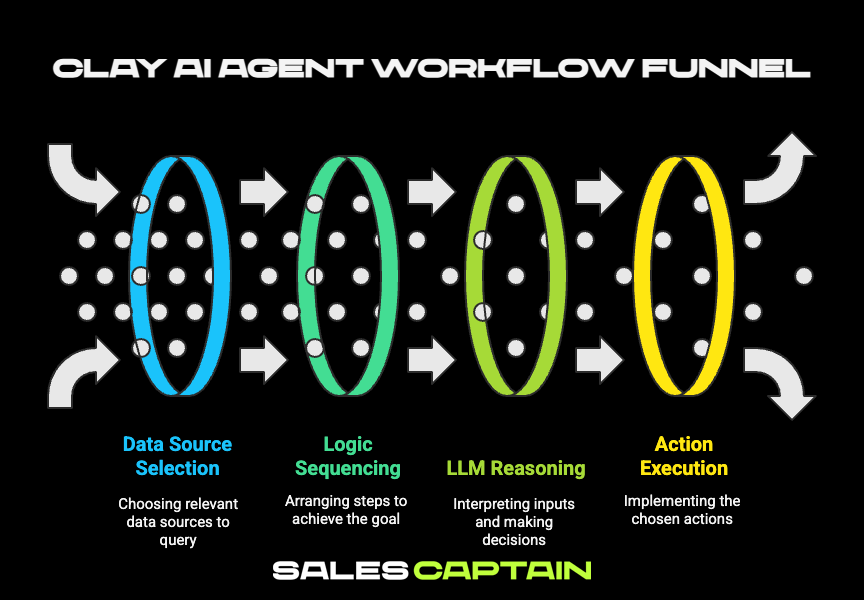
How Clay AI Agents Function
Clay AI Agents run on dynamic logic stacks. You give them a goal, say, “Find SaaS founders in NYC, enrich with funding data, and launch a tailored email flow.” Then they figure out every step on their own. They decide which data sources to query, how to sequence the logic, and when to trigger the next move.
It’s not just logic flows. They use LLMs like GPT for reasoning, a layer that lets them interpret fuzzy inputs (like vague ICPs or open-ended prompts) and act with context.
The agent thinks before it moves. That’s the leap from workflows to intelligence.
Differences Between Clay AI Agents and Traditional Methods
Traditional automation runs on rails. It’s deterministic. You plan every step, and if the data doesn’t line up, it breaks. Clay AI Agents don’t operate like that.
Here’s the shift:
- Static rules are replaced with adaptive reasoning.
- Rigid triggers are replaced with permissioned decisions.
- Manual QA becomes irrelevant; the agent checks itself.
Legacy workflows rely on exact data. Clay agents work with ambiguity, incomplete records, and signals in motion. If they can’t find something, they try a different method. They don’t ask for instructions; they improvise.
That’s why this isn’t “just automation.”
Technical Architecture and Capabilities
Under the hood, Clay AI Agents sit on top of a modular architecture made of plug-and-play building blocks:
- API connectors to thousands of data sources
- Real-time LLM processing for interpretation and transformation
- Custom function scripting in Python
- Conditional logic branching across steps
- Secure credential handling and permissions
You layer these into a stack. Each layer adds reasoning, enrichment, or execution. Each step can reference outputs from prior steps, and when a new signal comes in, it starts fresh.
It scales from "find a verified email" to "build this outbound list, enrich it based on ICP match, rewrite job titles into high-intent triggers, and launch a campaign."
No code required. But deep technical power if you want it.
Key Benefits of Using Clay AI Agents
Enhanced Data Enrichment and Unique Insights
Clay agents don’t just fetch data; they assemble narratives. They triangulate from multiple sources, parse messy LinkedIn bios, verify job changes, and match obscure attributes like tech stack crossover or buyer intent signals.
It’s not about getting the first name and company anymore. It’s about finding “early-stage founders who just hired for sales” and sending them a relevant message that day.
Data is everywhere. Clay agents make it usable. And contextual.
Streamlined Workflows for Business Efficiency
Instead of stitching together five tools with fragile zaps, Clay agents run entire workflows in one place: sourcing, enrichment, logic, outreach. Everything runs in sequence, or changes course when needed.
The impact? Fewer handoffs. Fewer dropped leads. No bloated operations stack.
Analysts, marketers, and salespeople can ship faster because the logic lives in Clay. And it adapts.
Cost Reduction through Centralized Solutions
Hiring data ops teams. Paying for enrichment tools. Outsourcing research. All expensive. Clay AI Agents consolidate those motions and replace several manual roles in the process.
Instead of hiring three people or paying five vendors, you use one agent.
That’s not just automation ROI. That’s operational leverage.
Enterprise-Grade Security and Compliance
Clay was built with serious teams in mind: SOC 2 Type II compliance, built-in permission management, and secure credential storage.
You control what agents can access, where data flows, and who sees what. LLMs run in controlled environments, and sensitive flows are audit-logged.
Power and safety in the same stack.
Potential Use Cases for Clay AI Agents
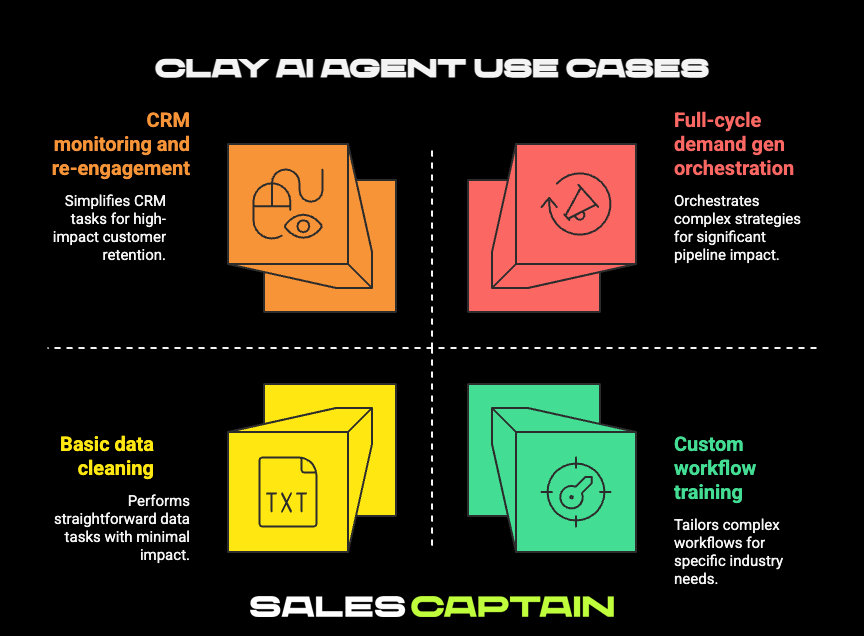
Sales and Marketing Optimization
Clay AI Agents obliterate the research bottleneck. They build outbound lists, personalize messages, and even detect high-intent signals automatically.
Instead of SDRs spending hours on LinkedIn, your “agent” searches profiles, writes intros, and tags high-priority leads.
Want full-cycle demand gen orchestration? Combine your agent with a cold outreach agency like SalesCaptain. They plug the strategy into the machine to drive a real pipeline.
Customer Relationship Management
Clay agents help you stop losing deals in the cracks.
They monitor CRM updates, contact records, and customer signals. If a lead goes cold, the agent triggers re-engagement. If a key contact switches jobs, it flags your team or launches a reactivation campaign.
No contact goes stale. Every signal gets acted on.
Data Management and Analysis
Agents can clean, normalize, deduplicate, and enrich massive datasets, pulling from sources like Crunchbase, LinkedIn, Hunter, and more.
They process unstructured data with LLMs, categorize prospects based on fuzzy criteria (“looks like design tool ICP”), and output structured, usable lists.
That turns messy spreadsheets into clean revenue systems.
Custom Workflows for Specific Industries
Every vertical operates differently. Clay AI Agents adapt.
You can train agents for:
- B2B SaaS outbound
- Ecom product sourcing
- Healthcare staffing
- Real estate investor outreach
Pick your motion. Build your agent. Let it run.
No one-size-fits-all templates. Just infinitely programmable logic.
Industry-Specific Applications of Clay AI Agents
Transforming Real Estate Practices
Real estate agents need hyper-local lead data, fast.
Clay AI Agents auto-discover new listings, scrape contact info, and detect buyer patterns like recent job relocations or expiring leases, all from public signals.
You now reach the seller before the listing hits MLS.
That’s zero-latency lead generation.
Revolutionizing Healthcare Management
Every minute matters in healthcare.
Clay AI Agents track provider directories, verify credentials, and match contractors with open shifts or vacancies. They handle compliance steps in line. And adapt to changing regulations on the fly.
From staffing to vendor outreach, it’s healthcare automation tailored.
Improving Financial Services
In finance, compliance and speed fight each other. Clay agents fix that.
They handle KYC enrichment, flag risk signals, monitor deal KPIs, and automate investor updates.
The result? Faster deal cycles with less manual input, and zero compliance shortcuts.
Signals tracked. Rules followed. Pipeline moving.
Enhancing eCommerce Operations
eCommerce growth is about knowing what’s selling, why, and where to push next.
Clay AI Agents scrape reviews, spot trending products across marketplaces, and enrich supplier lists with real-time attributes like shipping speed or cost-per-unit.
That’s market research, sourcing, and outreach, automated at scale.
Product winners rise faster. Supply chains tighten. Margins stay healthy.
Ready to build yours?## Implementation Considerations for Clay AI Agents
Technical Challenges and Solutions
Clay AI Agents are powerful, but not plug-and-play magic. You’re layering logic over live data streams, LLMs, APIs, and conditional workflows. That power demands precision.
Common technical hurdles:
- Complex logic orchestration: When agents trigger actions based on multiple signals or data layers, misconfigurations can cascade. Solution? Start small. Deploy sub-flows and test isolated logic branches before you scale.
- Unstable data sources: Public APIs and web scrapers break. Often. Use fallback prompts or alternate data paths to reduce fragility. Clay’s modular structure helps here; easy to swap in backup logic.
- LLM unpredictability: GPT can hallucinate if given unclear prompts. The fix: constrain outputs using templates, pattern checks, or logic gates that validate before taking action.
- Latency and retry loops: External services stall. Agents not built with smart try-catch patterns will freeze or spam retries. Bake in circuit breakers and refresh timers.
The real trick? Think like a system designer, not a task master. You’re building infrastructure, not just automation.
Operational Challenges and Best Practices
AI Agents introduce a shift in GTM culture. You’re giving creative autonomy to machines. That’s exciting. It’s also risky without clear ops guardrails.
What breaks in ops:
- No visibility into logic outcomes: If your agent routes 2,000 leads off a faulty signal, that's invisible damage, until your inbox fills with unsubscribe emails.
- Team misalignment: Agents that launch outreach without sales input... never ends well. Set permission layers and team approvals for sensitive actions.
- Overtrust in “AI magic”: Teams assume the agent can’t be wrong. Always monitor outcomes, especially in the first 30 days.
Best practices:
- Run regression tests on enrichment logic.
- Use human-in-the-loop QA for high-impact outputs at first.
- Log every output, decision tree, and fallback.
- Create alerting if core sources fail or flows stall.
- Don’t run blind. Monitor signals and outcomes like a data product.
Clay AI Agents change your GTM motion. But they require real operational thinking. A technical GTM owner is non-negotiable.
Ethical Considerations in AI Use
AI agents don’t just follow rules; they learn, adapt, and infer. That opens the door to real ethical implications, especially in outbound and user data handling.
Things to watch:
- Consent boundaries: Just because you can pull data doesn’t mean you should act on it. Layer consent flags and segment by opt-in sources.
- Message personalization abuse: LLMs can tempt bad personalization, using family info, religious affiliations, or inferred preferences. It might boost replies, but it torches trust.
- Bias in logic: If your logic uses flawed training data or assumptions (like keywords signaling “qualified”), you hardcode bias into action.
Discipline here means:
- Only sourcing from public, permissioned channels.
- Testing output tone and ethical norms across demos.
- Red-teaming logic for unintentional bias.
Automation without ethics is weaponized outreach. Clay gives you the power. It’s on you to use it responsibly.
Case Studies and Customer Testimonials
Successful Implementations of Clay AI Agents
Plenty of teams are already using Clay AI Agents to kill tedious GTM work and launch full-stack automation.
One B2B SaaS company used an agent to scan GitHub stars on competitor repos, enrich them with LinkedIn job titles, then launch outbound flows to dev leads who matched their ICP. The entire flow, from discovery to messaging, ran without human input. Close rates tripled in 30 days.
Another example: a staffing agency used Clay agents to track job changes across healthcare workers, then automatically route candidates to recruiters based on region and credentials. Manual syncing between ATS and CRM? Gone.
It’s not about saving time. It’s about unlocking velocity that GTM teams didn’t think was possible.
Customer Feedback and Testimonials
Customers keep coming back to a single theme: Clay agents feel like hiring a full-time analyst who never sleeps.
"I replaced three offshore roles with one Clay agent. It researches, enriches, and personalizes, we're closing faster and spending less."
, Head of Revenue, AI Infrastructure Startup
"We call it our ‘ghost SDR.’ It pulls signals from six data platforms and feeds my sales team a daily prospect list, trimmed and ready."
, CEO, Logistics SaaS Platform
"Not just automation. It's the GTM infrastructure now. Gamechanger for demand gen."
, Partner, Go-To-Market Agency
Behind these results? Clarity of goal, great initial instruction, and tight feedback loops. Build the agent like you'd onboard a new team member. Then it delivers like one.
The Future of Clay AI Agents and Relationship Management
Trends and Innovations on the Horizon
Clay AI Agents are just scratching the surface of what’s possible. Several future directions are already taking shape:
- Real-time behavior-based agents: Instead of waiting for contact list updates, agents will soon trigger actions based on live user behavior, site visits, LinkedIn engagement, and in-app triggers.
- Autonomous negotiation flows: Early agents handle outreach. Next-gen logic will handle back-and-forths like pricing, scheduling, and even rebuttal handling using LLMs.
- Deeper CRM embedding: AI agents will live inside your CRM, not adjacent to it, automatically rewriting records, adding context, and suggesting next steps based on momentum logic.
As agent logic gets smarter, human interaction becomes more strategic. Less bulk clicking. More signal interpretation and close.
Predictions for AI Agent Evolution
Here’s what’s coming:
- The death of outsourced prospecting. Once Clay AI Agents can autonomously handle targeting, enrichment, QA, and messaging with context, paying $5 per lead becomes obsolete.
- GTM teams are built like data teams. Your best teammate won’t be a rep. It'll be a technical GTM operator building, testing, and optimizing pipelines as if they were API products.
- Full-loop learning systems. Agents won’t just execute. They’ll ingest campaign results and rewrite logic based on performance, live conversion feedback into strategy.
Outbound is no longer sales-only. Marketing owns the message. Tech owns system integrity. And agents now execute the play.
Getting Started with Clay AI Agents
How to Build Your First AI Agent
Start with a single routing logic you already run manually. Maybe it’s: “Find new VPs of Marketing at Series A SaaS firms on LinkedIn, verify their email, draft intro copy, and log to HubSpot.”
Break that into steps:
- Define your data sources and filters.
- Set your enrichment steps.
- Layer in logic gates for qualification.
- Add messaging logic using LLM blocks.
- Send or log output to next system (email tool, CRM, Airtable, etc.)
Inside Clay, this takes minutes to prototype. No engineers required. Just your brain and clarity.
Tip: Use Clay’s “Examples” library. Reverse-engineer an existing agent that’s close to your use case.
Pricing Information and Options
Clay’s pricing is usage-based, not seat-based. You pay per credit; each action (like scraping or running an LLM block) consumes credits.
Your first 3,000 credits are free using this link. That’s enough to test whether agents fit your process.
After that, plans start for teams and scale with volume. Custom pricing for large-scale deployments is also available if you're building Clay into core ops.
High ROI starts even on small plans, especially if you're replacing outsourced labor or expensive data subscriptions.
Resources and Support for Users
Need help launching your first workflow? Clay has solid learning assets:
- A YouTube library of no-code walkthroughs
- A Documentation hub with agent templates
- A Slack community of builders and operators
- On-demand support through in-app chat
- Power-user forums where workflows are shared and dissected
You’re not starting cold. You’re learning from a fast-moving group of technical GTM operators who’ve already seen what works.
And if you need a jumpstart, agencies like SalesCaptain can co-build high-efficiency outbound systems using Clay agents, built to your ICP, motion, and product.
Clay AI Agents are automated systems that reason through data and trigger actions based on instructions you give them. They explore data sources, enrich leads, and launch actions across your stack, without you having to micromanage every step.
They think, decide, and move, just like a trained analyst, fueled by AI.
Think speed, scale, and precision. Agents don’t get tired. They don’t forget steps. And they make decisions using current data, not stale CRM records.
They replace the dozens of micro-decisions your team makes every day, and they do it on autopilot.
That means fewer handoffs, less manual QA, and a faster GTM cycle.
Anywhere signal matters, and manual processes slow things down:
- SaaS outbound
- E-commerce product research
- Healthcare staffing
- Financial KYC processing
- Real estate prospecting
If there’s data to track and action to take, an AI agent can run it.
Don’t treat agents like macros. They need clear instructions, edge cases, and QA logic. Start small, with one defined outcome.
Be prepared to debug, optimize, and iterate, especially in the first few runs.
And always assign a technical owner. This isn’t a “set it and forget it” system. It's a GTM engine.
Clay is SOC 2 Type II compliant. It features encrypted credential handling, permission controls, and full audit logs for actions.
Data flows are secure, controlled, and transparent. You can even set logic around sensitive info handling and redact outputs before external display.
It’s built for teams with real security expectations.
Start with Clay’s official site; you’ll find guides, community support, and video tutorials there.
You can also join their Slack group, where advanced users share templates and troubleshooting tips.
Need a more hands-on partner? Outbound agencies like SalesCaptain specialize in building and optimizing agent-powered GTM systems. So you don’t have to figure it out solo.
RELATED ARTICLES
Check out more articles on our blog!
RELATED ARTICLES
Lorem ipsum dolor sit amet, consectetuer adipiscing elit, sed diam nonummy nibh euismod tincidunt ut laoreet dolore magna aliquam erat volutpat.


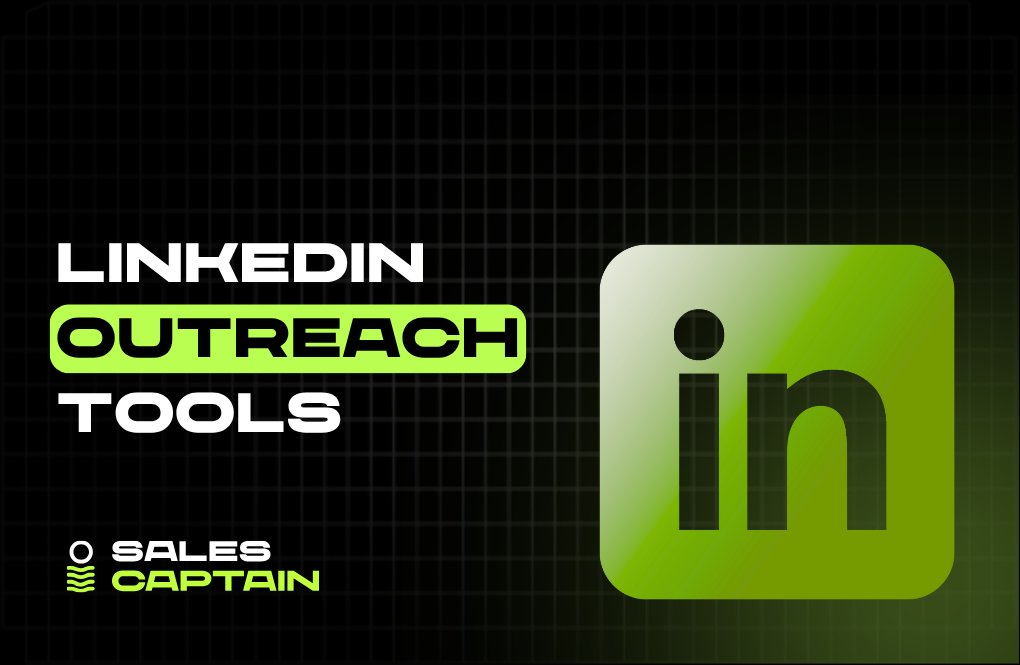

.jpg)

